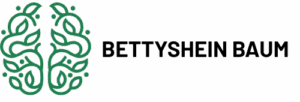In a world where distractions lurk around every corner, forming good habits can feel like trying to catch a greased pig. But what if there were books designed to help tame that slippery little critter? Habit-forming books are like personal trainers for the mind, guiding readers through the chaos of daily life and nudging them toward positive change.
Table of Contents
ToggleOverview of Habit Forming Books
Habit-forming books serve as vital resources for individuals seeking to establish positive routines. These books provide strategies and insights into the psychology behind habit formation. Readers find practical advice on overcoming obstacles that hinder good habits.
Many authors combine scientific research with actionable steps. For example, “Atomic Habits” by James Clear presents a system based on the aggregation of marginal gains. This approach emphasizes small changes leading to significant improvement.
Another notable title, “The Power of Habit” by Charles Duhigg, explores the science of habits and their impact on daily life. Duhigg explains the habit loop: cue, routine, and reward. Understanding this loop helps readers identify triggers and alter behaviors effectively.
Additionally, “Mindset” by Carol S. Dweck highlights the importance of a growth mindset for habit formation. Adopting a growth mindset motivates individuals to embrace challenges and persist through setbacks.
Several other habit-forming books equip readers with tools to design their environments for success. “Tiny Habits” by BJ Fogg offers techniques for developing habits through tiny, manageable changes. Fogg’s method emphasizes the significance of starting small and scaling up over time, ensuring long-term results.
These books often feature step-by-step frameworks, fostering clarity and actionability. Summarizing complex ideas into digestible concepts enhances reader understanding and application. By leveraging the insights within these texts, individuals can navigate chaos and implement lasting positive change in their lives.
Key Concepts of Habit Formation

Habit formation involves understanding both the psychological and physiological components that drive behavior. These concepts provide insights into creating lasting changes.
The Science Behind Habits
The habit loop consists of three components: cue, routine, and reward. Cues trigger habits, routines refer to the actions taken, and rewards reinforce those actions. Studies suggest that approximately 40% of daily actions are habits, indicating their significant role in human behavior. Research published in “The Power of Habit” by Charles Duhigg emphasizes the brain’s reliance on these loops, highlighting the importance of recognizing cues to create effective routines. Neuroplasticity plays a role as well, enabling the brain to develop new pathways when behaviors are repeated consistently. In essence, understanding this scientific framework supports individuals aiming to form beneficial habits.
Importance of Habit Forming in Daily Life
Habits significantly influence quality of life. Positive habits like regular exercise, healthy eating, and consistent reading contribute to personal growth and well-being. Establishing constructive routines enhances productivity and reduces decision fatigue. According to a study by the British Journal of General Practice, consistent daily habits can improve overall mental health and increase resilience against stress. Moreover, breaking negative habits opens pathways for healthier choices. Recognizing the role of small habits leads to larger, transformative changes. Ultimately, forming positive habits allows individuals to navigate challenges more effectively, creating a foundation for a fulfilling life.
Top Habit Forming Books to Consider
These books provide valuable insights and techniques to help build lasting habits. Each title offers unique perspectives and practical advice on personal growth.
“Atomic Habits” by James Clear
“Atomic Habits” emphasizes the power of small changes in daily routines. Clear presents actionable strategies that focus on the habit loop, which includes cue, routine, and reward. His concept of the aggregation of marginal gains illustrates how tiny improvements can lead to significant outcomes. The book encourages readers to identify specific cues that trigger desired behaviors. Integrating these small modifications simplifies the process of habit formation. Clear’s engaging writing style makes complex ideas accessible, promoting sustainable habits over time.
“The Power of Habit” by Charles Duhigg
Charles Duhigg’s “The Power of Habit” explores the science behind why habits exist and how they function. Duhigg introduces the habit loop and provides examples from various fields, including business and healthcare. Understanding the components of the loop—cue, routine, and reward—enables readers to reshape their behavior. The book illustrates how routines can be changed by altering the cues and rewards associated with them. Duhigg blends scientific research with compelling storytelling, making complex concepts relatable and memorable.
“Mini Habits” by Stephen Guise
“Mini Habits” by Stephen Guise advocates for starting small to achieve significant changes. Guise promotes the idea that beginning with tiny, manageable tasks makes it easier to establish and maintain new habits. He emphasizes that by setting low bars, individuals create a system that fosters consistency and reduces resistance. Success with these mini habits builds confidence and motivation over time. By focusing on small progress, Guise encourages readers to embrace incremental changes that lead to long-term benefits.
How to Implement Lessons from Habit Forming Books
Implementing lessons from habit-forming books requires practical strategies that resonate with daily routines.
Setting Realistic Goals
Establishing realistic goals is crucial for habit formation. When goals are clear and attainable, they’re easier to follow. Break large ambitions into smaller, manageable steps. Each small success builds momentum and confidence. For example, if someone aims to read 12 books in a year, setting a goal to read one book each month is effective. This approach allows for gradual accomplishment without overwhelming pressure. Aligning goals with personal values increases commitment, making it easier to stay on track.
Tracking Progress Effectively
Tracking progress helps maintain motivation and accountability. Implement a system to monitor habits regularly. Using apps or journals can offer insights into daily actions and patterns. For instance, a habit tracker can visually represent consistency, reinforcing positive behaviors. Establishing a routine for reviewing progress, such as weekly check-ins, fosters reflection and adjustment. Adapting methods based on what works best ensures ongoing growth. Visibility of achievements enhances motivation, making it easier to celebrate milestones along the way.
Habit-forming books are invaluable allies in the quest for personal growth and well-being. They provide readers with actionable strategies and insights into the mechanics of habit formation. By understanding the habit loop and embracing small changes, individuals can cultivate positive routines that enhance their lives.
These resources not only offer knowledge but also inspire readers to take charge of their behaviors. With the right mindset and tools, anyone can navigate the distractions of daily life and build lasting habits. Embracing the lessons from these books can lead to significant transformations, paving the way for a more fulfilling and productive life.






